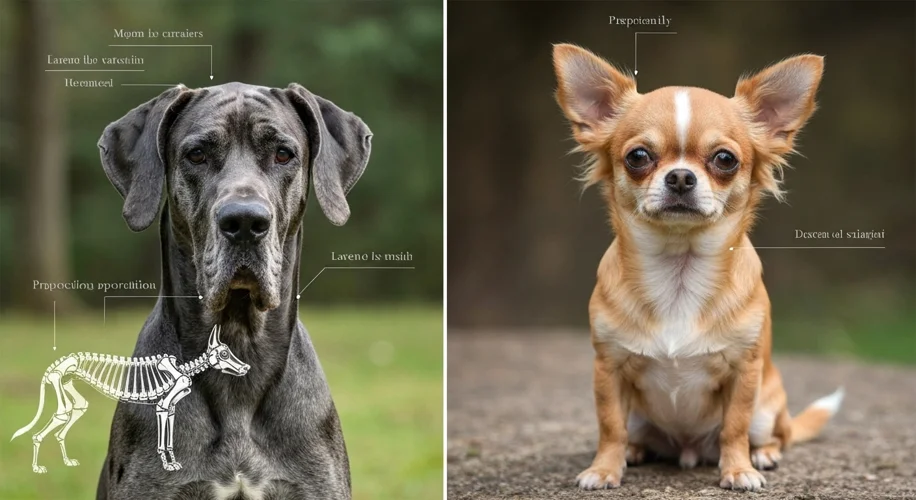Have you ever looked at a Great Dane standing next to a Chihuahua and wondered about the sheer range of sizes within the same species? It’s a question that might seem simple, but it touches upon some really deep biological principles. Today, let’s dive into why dogs come in such wildly different shapes and sizes, and what that tells us about adaptation and evolution.
It’s easy to think of dogs as just pets, but they’re also a fantastic case study in biology. All domestic dogs, Canis familiaris, are descendants of the wolf. Yet, through selective breeding over thousands of years, humans have shaped them into the incredible diversity we see today. This process is a powerful example of artificial selection, where specific traits are favored and passed down.
When we talk about the physical differences, like the length of a dog’s legs relative to its body, we’re looking at biomechanics and scaling. Biomechanics is the study of how living things move, and scaling refers to how physical properties change with size. For example, a larger animal might need proportionally thicker bones to support its weight, and its stride length will naturally be greater.
Think about a Greyhound. Its long legs and lean body are perfect for speed. This is an adaptation honed by selective breeding for a specific purpose – chasing prey. On the other hand, a Basset Hound’s short, sturdy legs are better suited for endurance and perhaps for navigating denser terrain. These aren’t random occurrences; they’re the result of generations of breeding for traits that were considered desirable or useful.
From an evolutionary perspective, these differences highlight how environmental factors and selective pressures can shape a species. While in the wild, these pressures are natural (like surviving predators or finding food), in the case of dogs, humans have become the primary selective pressure. We’ve essentially created miniature evolutionary pathways within our own homes.
This brings us to the concept of adaptation. Every trait, whether it’s a long snout, floppy ears, or short legs, is an adaptation. These adaptations often come with trade-offs. A dog bred for extreme shortness might have challenges with certain types of movement compared to a dog with more average proportions. These are the kinds of biological compromises that occur when you push certain physical traits to their limits.
So, the next time you see a Dachshund or a Borzoi, remember that their unique proportions aren’t just about looks. They’re a living testament to thousands of years of biological history, human intention, and the incredible adaptability of life. It’s a fascinating glimpse into how biology, evolution, and even our own actions can sculpt the natural world around us.

